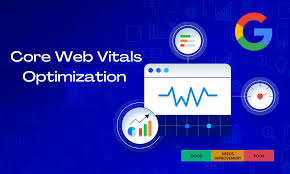-
- Core Web Vitals Optimization: A Comprehensive Guide
- Understanding Core Web Vitals
- Configuration Steps for Core Web Vitals Optimization
- Step 1: Measure Current Performance
- Step 2: Optimize Largest Contentful Paint (LCP)
- Step 3: Improve First Input Delay (FID)
- Step 4: Reduce Cumulative Layout Shift (CLS)
- Best Practices for Core Web Vitals Optimization
- Case Studies and Statistics
- Conclusion
Core Web Vitals Optimization: A Comprehensive Guide
In today’s digital landscape, user experience is paramount. Google has emphasized the importance of Core Web Vitals as key metrics that measure the real-world experience of users on a website. These metrics—Largest Contentful Paint (LCP), First Input Delay (FID), and Cumulative Layout Shift (CLS)—are critical for SEO and overall site performance. Optimizing these metrics not only enhances user satisfaction but also improves search engine rankings. This guide will provide actionable steps, practical examples, and best practices for optimizing Core Web Vitals effectively.
Understanding Core Web Vitals
Before diving into optimization techniques, it’s essential to understand what Core Web Vitals are:
- Largest Contentful Paint (LCP): Measures loading performance. A good LCP score is 2.5 seconds or less.
- First Input Delay (FID): Measures interactivity. A good FID score is 100 milliseconds or less.
- Cumulative Layout Shift (CLS): Measures visual stability. A good CLS score is 0.1 or less.
Configuration Steps for Core Web Vitals Optimization
Step 1: Measure Current Performance
Before making changes, assess your current performance using tools like Google PageSpeed Insights, Lighthouse, or Web Vitals Chrome Extension. These tools provide insights into your LCP, FID, and CLS scores.
Step 2: Optimize Largest Contentful Paint (LCP)
To improve LCP, focus on the following:
- Optimize Images: Use next-gen formats like WebP and ensure images are properly sized.
- Minimize Server Response Times: Aim for a server response time of under 200ms.
- Implement Lazy Loading: Load images and videos only when they are in the viewport.
For example, if your LCP is affected by a large hero image, consider compressing it and using a CDN to serve it faster.
Step 3: Improve First Input Delay (FID)
To enhance FID, consider the following strategies:
- Minimize JavaScript Execution Time: Break up long tasks and defer non-essential scripts.
- Use Web Workers: Offload heavy computations to background threads.
- Optimize Event Handlers: Ensure that event handlers are efficient and do not block the main thread.
For instance, if your site has a complex JavaScript framework, consider code-splitting to reduce the initial load time.
Step 4: Reduce Cumulative Layout Shift (CLS)
To decrease CLS, implement the following:
- Specify Size for Images and Videos: Always define width and height attributes to prevent layout shifts.
- Use CSS for Fonts: Avoid using web fonts that cause layout shifts by using font-display: swap.
- Reserve Space for Ads: Ensure that ad slots have a defined size to prevent shifts when they load.
A practical example is to set a fixed height for banners and ads to avoid unexpected shifts when they load.
Best Practices for Core Web Vitals Optimization
- Regular Monitoring: Continuously monitor your Core Web Vitals using tools like Google Search Console.
- Prioritize Mobile Optimization: Ensure your site is responsive and performs well on mobile devices.
- Utilize a Content Delivery Network (CDN): Distribute content closer to users to reduce latency.
Case Studies and Statistics
According to a study by Google, websites that improved their Core Web Vitals saw a 20% increase in user engagement and a 15% decrease in bounce rates. For example, a popular e-commerce site optimized its LCP from 4 seconds to 1.8 seconds, resulting in a 30% increase in conversions.
Conclusion
Optimizing Core Web Vitals is essential for enhancing user experience and improving search engine rankings. By following the actionable steps outlined in this guide—measuring current performance, optimizing LCP, FID, and CLS, and adhering to best practices—you can significantly improve your website’s performance. Regular monitoring and adjustments will ensure that your site remains competitive in an ever-evolving digital landscape. Start implementing these strategies today to create a faster, more engaging web experience for your users.
